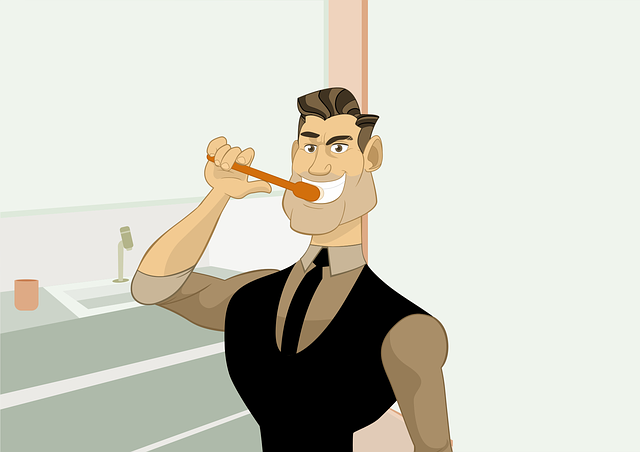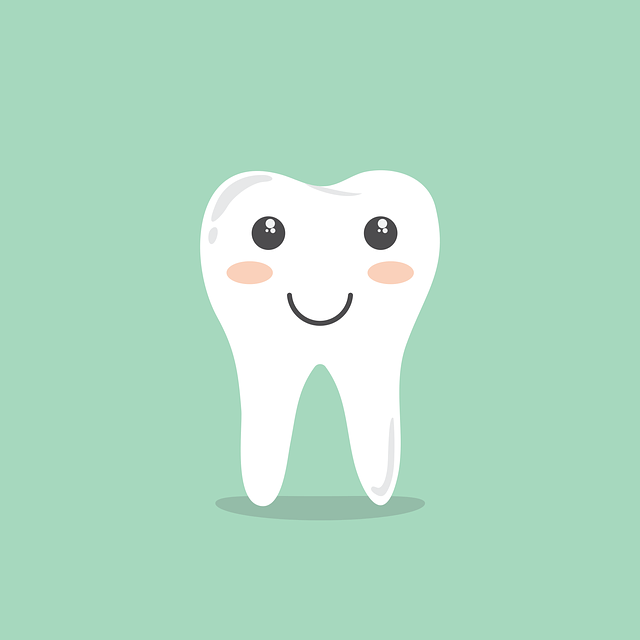Retainer Duration After Invisalign: What to Expect
Congratulations! You have successfully completed your Invisalign treatment and achieved a beautifully aligned smile. But, before you bid farewell to your aligners, there is one crucial step left to ensure your teeth stay in their newfound position: wearing retainers. In this article, we will explore the retainer duration after Invisalign and what you can expect during this phase. So, rest assured that by the end, you will have a clear understanding of the importance of retainers and the timeframe you’ll need to commit to maintain that stunning smile. Let’s dive in!
1) Understanding the Importance of Retainer Duration Following Invisalign Treatment
After completing your Invisalign treatment, it is crucial to understand the significance of wearing retainers for the recommended duration. Retainers play a vital role in maintaining the results achieved through Invisalign and ensuring the longevity of your beautiful smile. Here are a few key reasons why retainer duration should not be underestimated:
- Stabilizing Teeth: Retainers help stabilize your teeth in their new positions, preventing them from shifting back to their original alignment. This is particularly important during the initial months after Invisalign treatment when your teeth are more prone to relapse.
- Preserving Treatment Results: Wearing retainers as prescribed by your orthodontist will help preserve the results achieved through Invisalign. This ensures that your teeth remain straight, aligned, and aesthetically pleasing over the long term.
Additionally, accurate adherence to the recommended retainer duration can prevent the need for further orthodontic treatment down the line. Remember, your teeth have undergone significant changes during Invisalign, and it takes time for the surrounding tissues to adapt to their new positions. The duration of retainer wear is carefully determined by your orthodontist, taking into account your unique dental situation and treatment progress. By diligently following their instructions, you can optimize the benefits of Invisalign and maintain a confident smile for years to come.

2) Factors Affecting the Duration of Retainer Use After Invisalign
There are several factors that can influence the duration of retainer use after completing Invisalign treatment. Understanding these factors can help patients make informed decisions about their retainer use and maintain the results achieved with Invisalign.
1. Compliance: The most significant factor affecting the duration of retainer use is patient compliance. It is crucial to wear the retainer as instructed by the orthodontist to ensure that the teeth retain their new position. Deviating from the recommended wearing schedule or not wearing the retainer consistently can lead to relapse, where the teeth gradually shift back to their original position.
2. Type of Misalignment: The severity and type of misalignment also play a role in determining how long retainers should be worn. Minor cases of misalignment may require a shorter period of retainer use, while more complex cases may require longer retainer wear. Your orthodontist will assess your specific situation and provide guidance on the duration of retainer use based on the complexity of your treatment.

3) The Role of Retainers in Maintaining the Results of Invisalign Treatment
The Role of Retainers in Maintaining the Results of Invisalign Treatment
Once you’ve completed your Invisalign treatment and achieved that beautiful, straight smile you’ve always wanted, it’s important to understand the crucial role that retainers play in maintaining those results. Retainers are custom-made appliances designed to hold your teeth in their new, aligned position, preventing them from shifting back to their original positions.
Here are a few key points to know about the role of retainers:
- Preventing relapse: Retainers are essential in preventing relapse, which refers to the tendency of teeth to gradually shift back to their pre-treatment positions. By wearing your retainers as directed by your orthodontist, you can ensure that your teeth remain straight and aligned.
- Stabilizing teeth: Retainers help stabilize your teeth in their new positions, allowing the surrounding tissues and bone to adapt and support the new alignment. This stabilization process is crucial for long-term results.
- Types of retainers: There are two main types of retainers: removable and fixed. Removable retainers are typically made of clear plastic and can be easily taken off and put back on. Fixed retainers, on the other hand, are small wires bonded to the back of your teeth and are not visible when you smile.
Remember, wearing your retainers consistently and following your orthodontist’s instructions is key to maintaining the results of your Invisalign treatment. Make sure to clean your retainers properly, store them in a protective case when not in use, and schedule regular check-ups with your orthodontist to ensure everything is in order. By doing so, you can enjoy your beautifully aligned smile for years to come!

4) Expert Recommendations on How Long to Wear Retainers After Invisalign
Expert Recommendations on How Long to Wear Retainers After Invisalign
After completing your Invisalign treatment, it is crucial to wear retainers to maintain the results achieved. Experts recommend wearing retainers for a certain period to ensure your teeth stay in their new positions. While individual cases may vary, here are some general guidelines:
- Full-Time Wear: Typically, orthodontists advise wearing retainers full-time for the first few months after Invisalign treatment. This means wearing them day and night, only taking them out to eat and brush your teeth. Full-time retainer wear allows your teeth to stabilize and helps prevent any shifting.
- Night-Time Wear: After the initial full-time period, most experts suggest transitioning to night-time wear. This usually involves wearing your retainers every night while you sleep. Night-time wear continues to provide support and prevents any minor adjustments from occurring.
Remember that each person’s orthodontic needs may differ, so it is crucial to follow your orthodontist’s specific recommendations. They will consider factors such as the complexity of your case, your age, and your individual response to treatment. By diligently wearing your retainers as instructed, you can maintain the beautiful smile you achieved through your Invisalign journey.

5) Adjusting to Life with Retainers: Tips for a Smooth Transition
Adjusting to life with retainers can be a new experience for many people, but with a few helpful tips, you can ensure a smooth transition. Here are some things to keep in mind:
- Wear your retainers consistently: It’s important to wear your retainers as directed by your orthodontist. This usually means wearing them all day and night initially, and then gradually reducing the hours over time. Consistency is key in maintaining the alignment of your teeth.
- Clean your retainers properly: Just like your teeth, retainers need to be cleaned regularly to prevent bacteria buildup and odors. Rinse them with lukewarm water after each use and brush them gently with a toothbrush and non-abrasive toothpaste. Avoid using hot water as it can distort the shape of the retainers.
- Handle your retainers with care: Retainers are delicate, so be gentle when handling them. Avoid twisting or bending them, as this can cause damage. When you’re not wearing your retainers, store them in their case to protect them from getting lost or accidentally thrown away.
Additionally, it’s normal to experience some discomfort or pressure when you first start wearing retainers. This is temporary and should subside after a few days. If the discomfort persists or if your retainers don’t feel like they fit properly, don’t hesitate to contact your orthodontist for assistance. Remember, proper care and maintenance of your retainers will help ensure the long-term success of your orthodontic treatment.
6) Signs that Indicate It’s Time to Stop Wearing Retainers After Invisalign
Signs that Indicate It’s Time to Stop Wearing Retainers After Invisalign:
1. Teeth Stability: Once you have completed your Invisalign treatment, the first sign that indicates it’s time to stop wearing retainers is when your teeth have reached their desired stability. Retainers play a vital role in maintaining the alignment achieved by Invisalign, but once your teeth have settled into their new position, wearing retainers for an extended period may not be necessary. If you notice that your teeth remain in place even without wearing retainers consistently, it may be a good indication that you can gradually reduce the frequency of retainer use.
2. Orthodontist’s Recommendation: Your orthodontist is the best person to guide you on when to stop wearing retainers after Invisalign. They will closely monitor your progress and determine the optimal time to transition out of retainers. Trust their expertise and follow their instructions diligently. They will evaluate how well your teeth have adapted to their new alignment and advise you on the appropriate duration for retainer usage. Always consult with your orthodontist before making any decisions regarding retainer wear.
7) Long-Term Benefits of Consistent Retainer Use After Invisalign
Long-Term Benefits of Consistent Retainer Use After Invisalign
Once you have completed your Invisalign treatment and achieved the perfect smile you’ve always wanted, it’s important to understand the long-term benefits of consistent retainer use. While Invisalign aligners are incredibly effective at straightening teeth, the retainer plays a crucial role in maintaining the results and preventing any unwanted shifting. By wearing your retainer as instructed by your orthodontist, you can enjoy the following long-term benefits:
- Preserves the Alignment: Retainers help preserve the alignment of your teeth by stabilizing them in their new positions. This is particularly important during the first few months after Invisalign treatment, as the teeth are still settling into their new places. Consistent retainer use ensures that your teeth stay in their proper alignment, preventing any relapse.
- Prevents Teeth Shifting: Over time, there is a natural tendency for teeth to shift. However, wearing your retainer consistently can help prevent this shifting. Retainers act as a safeguard against any minor movements or rotations that may occur, keeping your smile straight and beautiful.
Remember, the long-term benefits of consistent retainer use can only be achieved if you follow your orthodontist’s instructions diligently. It’s essential to wear your retainer for the recommended duration each day and ensure proper cleaning and maintenance. By doing so, you can enjoy the lasting results of your Invisalign treatment and maintain the confidence that comes with a perfectly aligned smile.
Frequently Asked Questions
Q: How long do I need to wear a retainer after Invisalign treatment?
A: The duration of wearing a retainer after Invisalign treatment can vary depending on individual circumstances, but typically it is recommended to wear a retainer for at least 12 to 22 hours a day for the first six months after your treatment is completed.
Q: Why is wearing a retainer necessary after Invisalign?
A: Wearing a retainer is crucial after Invisalign treatment as it helps to maintain the alignment achieved by the aligners. It allows the teeth to settle into their new positions and prevents them from shifting back to their original misalignment.
Q: Can I remove my retainer while eating or drinking?
A: Yes, one of the benefits of Invisalign retainers is that they are removable. However, it is important to wear the retainer as instructed by your orthodontist to ensure the desired results. Remember to always place your retainer in a protective case when not in use.
Q: How long should I wear my retainer each day?
A: To ensure the effectiveness of your retainer, it is generally recommended to wear it for at least 12 to 22 hours a day, especially during the initial months following your Invisalign treatment. Gradually, your orthodontist may advise reducing the duration of wear.
Q: Do I need to wear my retainer forever?
A: While the duration of retainer wear varies from person to person, it is typically recommended to wear a retainer for an extended period of time, if not indefinitely. Some orthodontists may suggest wearing a retainer at night for several years or even indefinitely to ensure long-term teeth alignment.
Q: What happens if I don’t wear my retainer as instructed?
A: Failure to wear your retainer as instructed can lead to unwanted tooth movement and a potential shift back to the original misalignment. It is crucial to follow your orthodontist’s guidance to maintain the results achieved with Invisalign treatment.
Q: How often should I clean my retainer?
A: It is important to clean your retainer regularly to maintain good oral hygiene. Rinse it with lukewarm water after each use and gently brush it with a soft toothbrush using mild soap or non-abrasive toothpaste. Avoid using hot water or harsh cleaning agents that could damage the retainer.
Q: Can I use over-the-counter retainers instead of the one provided by my orthodontist?
A: It is strongly recommended to use the retainer specifically provided by your orthodontist. Over-the-counter retainers may not fit properly and can compromise the effectiveness of your treatment. Always consult with your orthodontist before making any changes to your retainer.
Q: Will my retainer be uncomfortable to wear?
A: Initially, you may experience some discomfort or pressure when wearing your retainer, especially during the first few days. However, this is normal and should subside as your mouth adjusts to the retainer. If discomfort persists or worsens, consult your orthodontist for guidance.
Q: How often should I visit my orthodontist after Invisalign treatment?
A: Your orthodontist will determine the frequency of your post-treatment visits based on your individual needs. Typically, follow-up appointments are scheduled every few months to monitor the progress of your teeth alignment and ensure the retainer is functioning effectively.
Final Thoughts
In conclusion, when it comes to the retainer duration after Invisalign, there are a few key takeaways to keep in mind. Firstly, it is essential to understand that wearing a retainer is a crucial step in maintaining the results achieved through Invisalign treatment. Secondly, the duration of retainer usage varies from person to person, but typically it is recommended to wear them full-time for the first few months and then gradually transition to nighttime wear. Thirdly, the frequency of retainer replacement will depend on factors such as wear and tear, so it is important to follow the advice of your orthodontist regarding when to replace them. Lastly, consistent and diligent retainer usage is vital to prevent teeth from shifting back to their original position. By adhering to these guidelines, you can ensure long-lasting and beautiful results from your Invisalign treatment.






